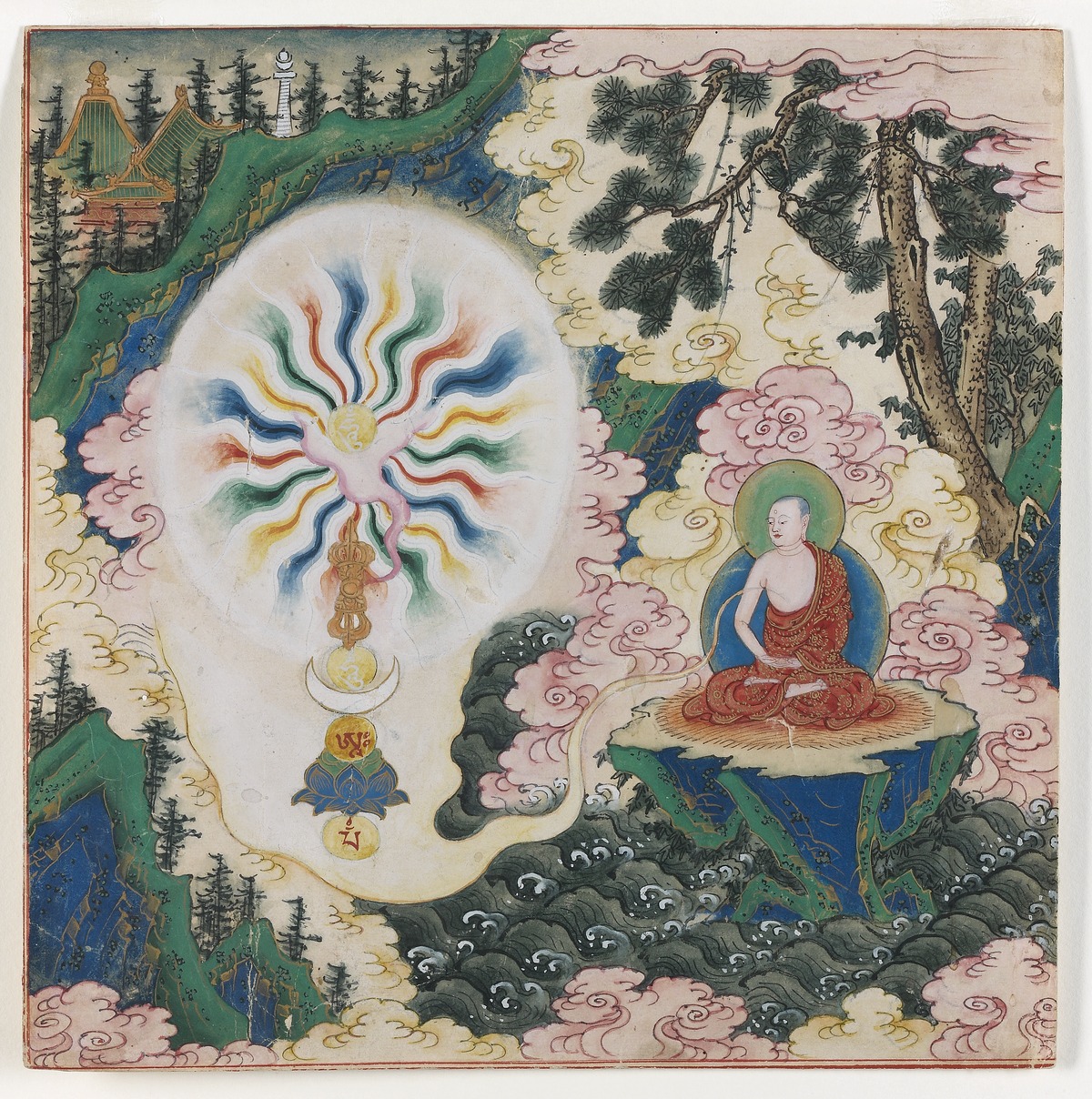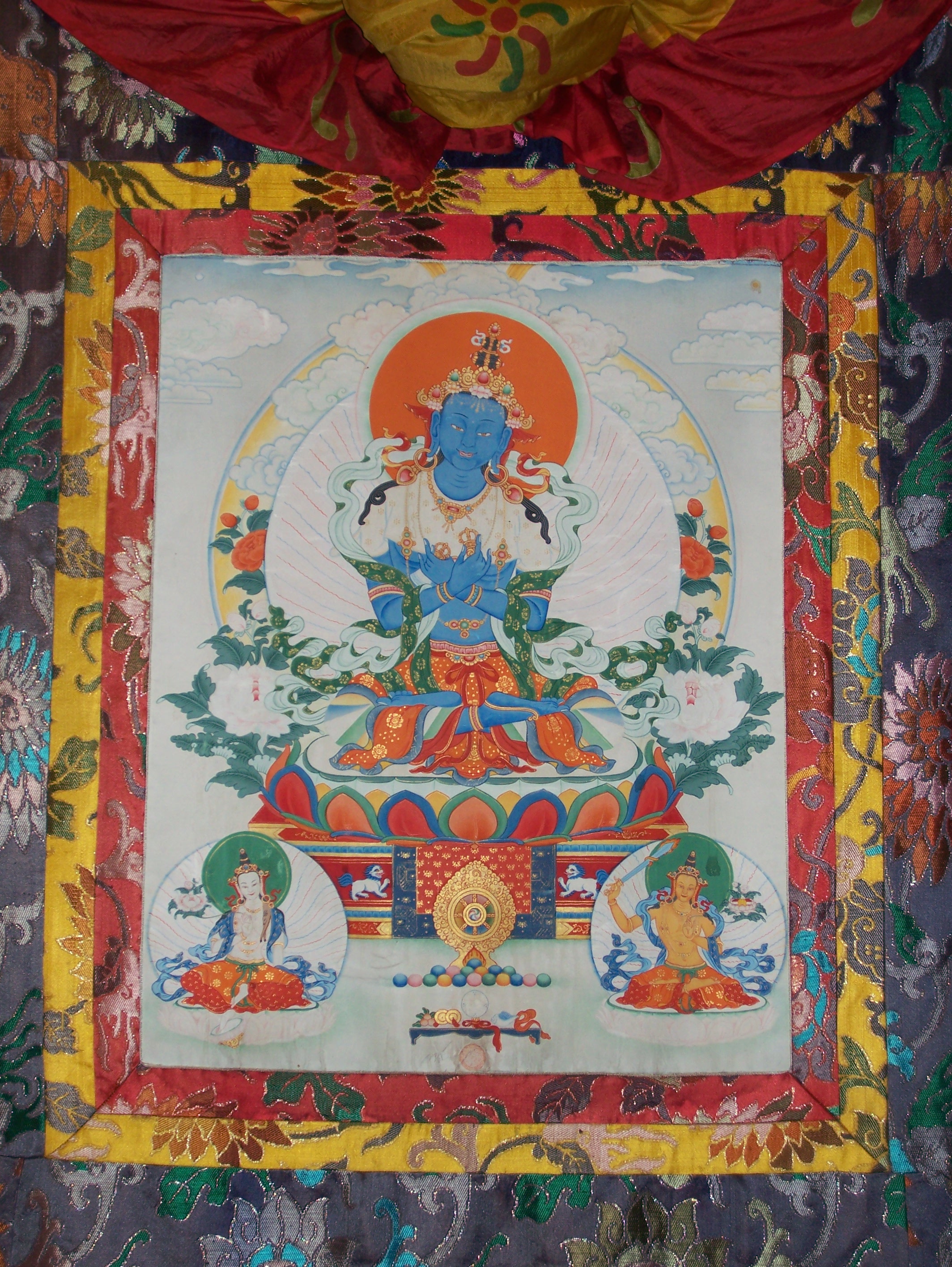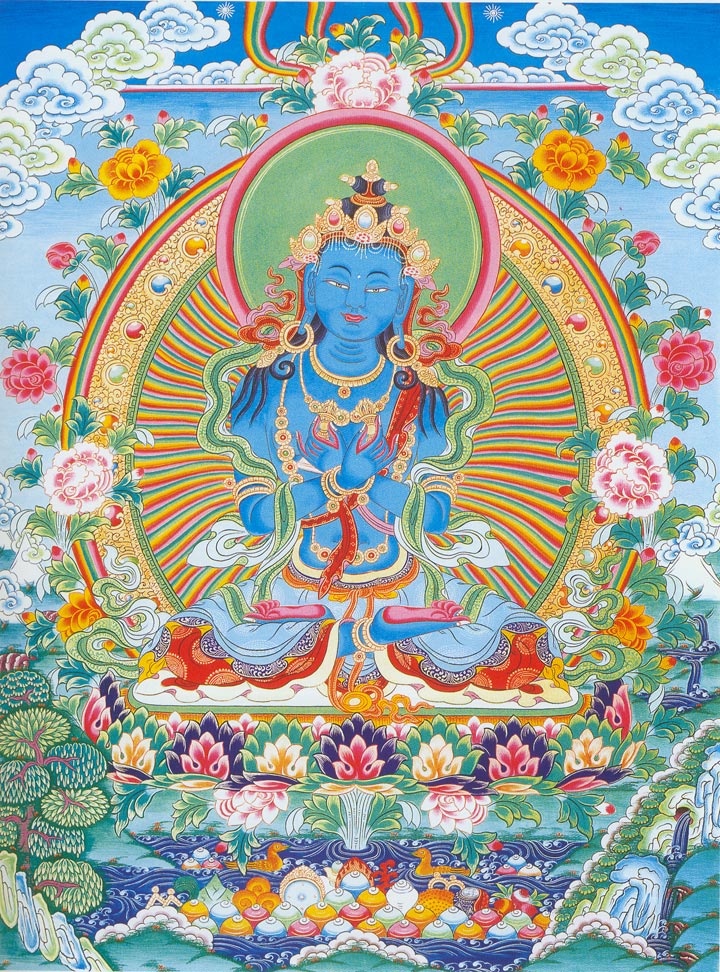|
Cakrasaṃvara Tantra
The ''Cakrasaṃvara Tantra'' (, ''khorlo demchok,'' The "Binding of the Wheels" Tantra) is an influential Buddhist Tantra. It is roughly dated to the late eight or early ninth century by David B. Gray (with a ''terminus ante quem'' in the late tenth century). The full title in the Sanskrit manuscript used by Gray's translation is: ''Great King of Yoginī Tantras called the Śrī Cakrasaṃvara'' (''Śrīcakrasaṃvara-nāma-mahayoginī-tantra-rāja''). The text is also called the ''Discourse of Śrī Heruka'' (''Śrīherukābhidhāna'') and the ''Samvara Light'' (''Laghusaṃvara''). "Cakrasaṃvara" may also refer to the main deity in this tantra as well as to a collection of texts or "cycle" associated with the root Cakrasaṃvara tantra. Tsunehiko Sugiki writes that this "Cakrasaṃvara cycle", "is one of the largest collections of Buddhist Yoginītantra literature from the early medieval South Asian world."Sugiki, Tsunehiko. Review of ''David B. Gray, The Cakrasamvara Tantra ... [...More Info...] [...Related Items...] OR: [Wikipedia] [Google] [Baidu] |
Deity Yoga
The fundamental practice of Vajrayana and Tibetan tantra is deity yoga (''devatayoga''), meditation on a chosen deity or "cherished divinity" (Skt. ''Iṣṭa-devatā,'' Tib. ''yidam''), which involves the recitation of mantras, prayers and visualization of the deity, the associated mandala of the deity's Buddha field, along with consorts and attendant Buddhas and bodhisattvas. According to the Tibetan scholar Tsongkhapa, deity yoga is what separates Tantra from Sutra practice. In the Unsurpassed Yoga Tantras, the most widespread tantric form in Indo-Tibetan Buddhism, this method is divided into two stages, the generation stage (''utpatti-krama'') and the completion stage (''nispanna-krama''). In the generation stage, one dissolves one's reality into emptiness and meditates on the deity-mandala, resulting in identification with this divine reality. In the completion stage, the divine image along with the subtle body is applied to the realization of luminous emptiness. The In ... [...More Info...] [...Related Items...] OR: [Wikipedia] [Google] [Baidu] |
Vajravārāhī
In Tibetan Buddhism, Vajravārāhī ("The Diamond Sow", Dorje Pakmo) is a wrathful form of Vajrayogini associated particularly with the ''Cakrasaṃvara Tantra'', where she is paired in yab-yum with the Heruka Cakrasaṃvara. Judith Simmer-Brown writes that "Vajravārāhī's iconography is very similar to that of Vajrayoginī, but she often has more prominent fangs and a more wrathful expression, and she prominently displays a sow's head above her right ear." Although there are practices of Vajravārāhī in all schools of Tibetan Buddhism, she is particularly associated with the Kagyu school and is one of the main yidam practices of that school. Her tulkus, the Samding Dorje Phagmo, are associated with the Bodongpa, a little-known school of Tibetan Buddhism. Iconography Vajravārāhī is one of the most popular female Tantric deities in all traditions of Tibetan Buddhism. Although there are several forms, the basic iconography is that she has one face, (usually) two hands an ... [...More Info...] [...Related Items...] OR: [Wikipedia] [Google] [Baidu] |
Vajradhara
Vajradhara (Sanskrit: वज्रधर. (Also, the name of Indra, because 'Vajra' means diamond, as well as the thunderbolt, anything hard more generally) Tibetan: རྡོ་རྗེ་འཆང། rdo rje 'chang (Dorje Chang); zh, t=金剛總持, p=Jīngāng zǒng chí; Javanese: Kabajradharan; Japanese: 持金剛仏; English: Diamond-holder; Vietnamese: Kim Cang Tổng Trì) is the ultimate primordial Buddha, or Adi-Buddha, according to the Sakya, Gelug and Kagyu schools of Tibetan Buddhism. In the evolution of Indian Buddhism, Buddha Vajradhara gradually displaced Samantabhadra, who is the 'Primordial Buddha' in the Nyingma, or 'Ancient School.' However, the two are metaphysically equivalent. Achieving the 'state of Vajradhara' is synonymous with complete realisation. According to the Kagyu lineage, Buddhā Vajradhara is the primordial Buddha, the Dharmakaya Buddha. He is depicted as dark blue in color, expressing the quintessence of buddhahood itself and representing ... [...More Info...] [...Related Items...] OR: [Wikipedia] [Google] [Baidu] |
Adi-Buddha
In Vajrayana Buddhism, the Ādi-Buddha () is the "First Buddha" or the "Primordial Buddha". Another common term for this figure is Dharmakāya Buddha. The term emerges in tantric Buddhist literature, most prominently in the Kalachakra.Buswell, Robert E.; Lopez, Jr., Donald S. (2013). ''The Princeton dictionary of Buddhism''. Princeton: Princeton University Press. . Entry on "ādibuddha". "Ādi" means "first", such that the Ādibuddha was the first to attain Buddhahood. "Ādi" can also mean "primordial", not referring to a person but to an innate wisdom that is present in all sentient beings. In Indo-Tibetan Buddhism In Indo-Tibetan Buddhism, the term Ādibuddha is often used to describe the Buddha Samantabhadra (in Nyingma), Vajradhara or Kalachakra (in the Sarma schools).Wayman, Alex; The Buddhist Tantras: Light on Indo-Tibetan esotericism, page 53. There was also a tradition in India which saw Mañjuśrī as the Ādibuddha, as exemplified by Vilāsavajra's commentary to t ... [...More Info...] [...Related Items...] OR: [Wikipedia] [Google] [Baidu] |
Rudra
Rudra (; sa, रुद्र) is a Rigvedic deity associated with Shiva, the wind or storms, Vayu, medicine, and the hunt. One translation of the name is 'the roarer'. In the Rigveda, Rudra is praised as the 'mightiest of the mighty'. Rudra means "who eradicates problems from their roots". Depending upon the periodic situation, Rudra can mean 'the most severe roarer/howler' (could be a hurricane or tempest) or 'the most frightening one'. This name appears in the Shiva Sahasranama, and R. K. Sharma notes that it is used as a name of Shiva often in later languages. The ''Shri Rudram'' hymn from the Yajurveda is dedicated to Rudra and is important in the Shaivism sect.For an overview of the Śatarudriya see: . In Prathama Anuvaka of Namakam (Taittiriya Samhita 4.5), Sri Rudram the 'mightiest of the mighty' Rudra, is revered as ''Sadasiva (meaning 'mighty Shiva')'' and Mahadeva. Sadashiva is the Supreme Being, Lord Paramashiva in the Mantra marga Siddhanta sect of Shaivism. ... [...More Info...] [...Related Items...] OR: [Wikipedia] [Google] [Baidu] |
Shiva
Shiva (; sa, शिव, lit=The Auspicious One, Śiva ), also known as Mahadeva (; ɐɦaːd̪eːʋɐ, or Hara, is one of the principal deities of Hinduism. He is the Supreme Being in Shaivism, one of the major traditions within Hinduism. Shiva is known as "The Destroyer" within the Trimurti, the Hindu trinity which also includes Brahma and Vishnu. In the Shaivite tradition, Shiva is the Supreme Lord who creates, protects and transforms the universe. In the goddess-oriented Shakta tradition, the Supreme Goddess ( Devi) is regarded as the energy and creative power (Shakti) and the equal complementary partner of Shiva. Shiva is one of the five equivalent deities in Panchayatana puja of the Smarta tradition of Hinduism. Shiva has many aspects, benevolent as well as fearsome. In benevolent aspects, he is depicted as an omniscient Yogi who lives an ascetic life on Mount Kailash as well as a householder with his wife Parvati and his three children, Ganesha, Kartikeya and A ... [...More Info...] [...Related Items...] OR: [Wikipedia] [Google] [Baidu] |
Vikramashila
Vikramashila (Sanskrit: विक्रमशिला, IAST: , Bengali:- বিক্রমশিলা, Romanisation:- Bikrômôśilā ) was one of the three most important Buddhist monasteries in India during the Pala Empire, along with Nalanda and Odantapuri. Its location is now the site of Antichak village, Bhagalpur district in Bihar. Vikramashila was established by the Pala emperor Dharmapala (783 to 820 AD) in response to a supposed decline in the quality of scholarship at Nalanda. Atiśa, the renowned pandita and philosopher, is listed as a notable abbot. It was destroyed by the forces of Muhammad bin Bakhtiyar Khalji around 1193. History A number of monasteries grew up during the Pāla period in ancient Bengal and Magadha. According to Tibetan sources, five great Mahaviharas stood out: Vikramashila, the premier university of the era; Nalanda, past its prime but still illustrious, Somapura, Odantapura, and Jagaddala. The five monasteries formed a network; "all ... [...More Info...] [...Related Items...] OR: [Wikipedia] [Google] [Baidu] |
Bhairava
Bhairava (Sanskrit: भैरव ) or Kala Bhairava is a Shaivite and Vajrayāna deity worshiped by Hindus and Buddhists. In Shaivism, he is a powerful manifestation, or avatar, of Shiva associated with annihilation. In Trika system ''Bhairava'' represents Supreme Reality, synonymous to Para Brahman.Christopher WalliTantra Illuminated/ref> Generally in Hinduism, Bhairava is also called Dandapani (" e who holds theDanda in ishand"), as he holds a rod or Danda to punish sinners, and Svaśva, meaning "whose vehicle is a dog". In Vajrayana Buddhism, he is considered a fierce emanation of boddhisatva Mañjuśrī, and also called Heruka, Vajrabhairava, and Yamantaka. He is worshiped throughout India, Nepal and Sri Lanka as well as in Tibetan Buddhism. Etymology Bhairava originates from the word ''bhīru'', which means "fearsome". Bhairava means "terribly fearsome form". It is also known as one who destroys fear or one who is beyond fear. One interpretation is that he protects hi ... [...More Info...] [...Related Items...] OR: [Wikipedia] [Google] [Baidu] |
Mahakala
Mahākāla is a deity common to Hinduism and Tantric Buddhism. In Buddhism, Mahākāla is regarded as the sacred '' Dharmapāla'' ("Protector of the Dharma"), while in Hinduism, Mahākāla is a fierce manifestation of the Hindu god Shiva and the consort of the goddess Mahākālī; he most prominently appears in the ''Kalikula'' sect of Shaktism. Mahākāla also appears as a protector deity in Vajrayana, Chinese Esoteric, and Tibetan Buddhism (see Citipati), and also in the Chàn and Shingon traditions. He is known as ''Dàhēitiān'' and '' Daaih'hāktīn'' ( 大黑天) in Mandarin and Cantonese, ''Daeheukcheon'' (대흑천) in Korean, ''Đại Hắc Thiên'' in Vietnamese, and ''Daikokuten'' ( 大黒天) in Japanese. Etymology is a Sanskrit bahuvrihi of ' "great" and ' "time/death", which means "beyond time" or death. means "Great Black One". "Protector" is also used to refer specifically to Mahākāla. Description According to ''Shaktisamgama Tantra'', the spouse of ... [...More Info...] [...Related Items...] OR: [Wikipedia] [Google] [Baidu] |
Alexis Sanderson
Alexis G. J. S. Sanderson (born 1948) is an indologist and Emeritus Fellow of All Souls College at the University of Oxford. Early life After taking undergraduate degrees in Classics and Sanskrit at Balliol College from 1968 to 1971, Alexis Sanderson spent six years in Kashmir studying with the scholar and Śaiva guru Swami Lakshman Joo. From 1977 to 1992 he was University Lecturer in Sanskrit Sanskrit (; attributively , ; nominally , , ) is a classical language belonging to the Indo-Aryan branch of the Indo-European languages. It arose in South Asia after its predecessor languages had diffused there from the northwest in the late ... and a Fellow of Wolfson College. Career In 1992 he was appointed to the Spalding Professor of Eastern Religions and Ethics, Spalding Chair of Eastern Religions and Ethics and became a Fellow of All Souls. He retired in 2015. Sanderson is a scholar of Sanskrit and of Indian religions, especially of Shaivism and esoteric Śaiva Tantra, comm ... [...More Info...] [...Related Items...] OR: [Wikipedia] [Google] [Baidu] |
.jpg)






